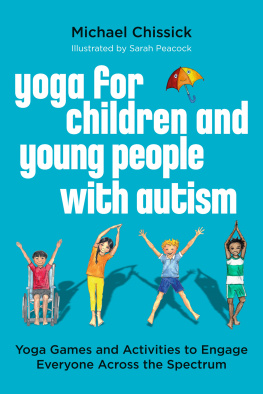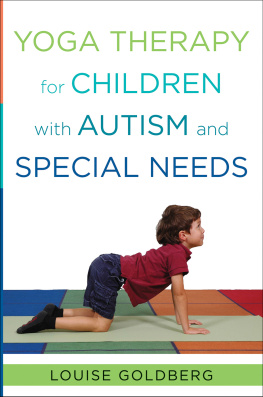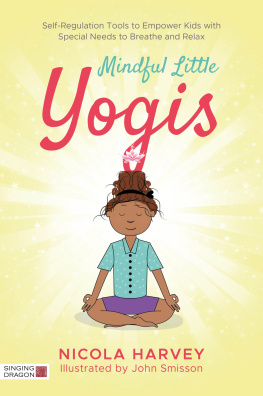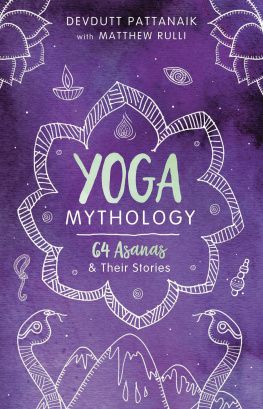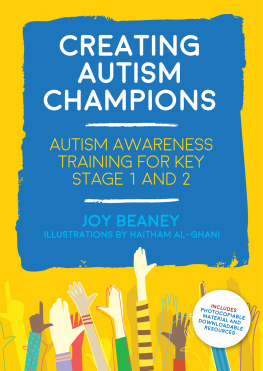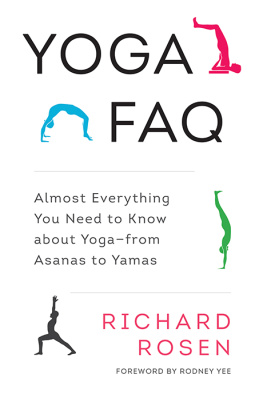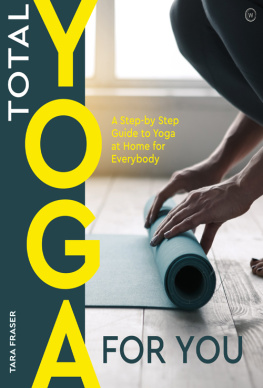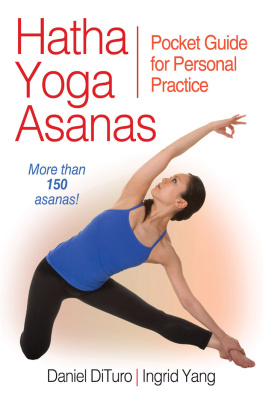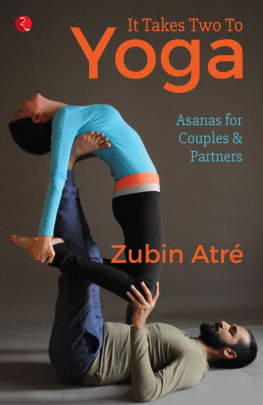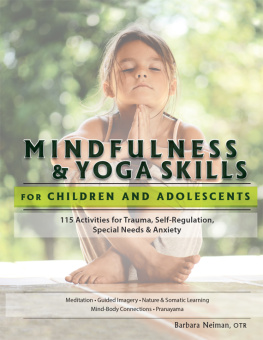Shawnee Thornton Hardy - Asanas for Autism and Special Needs: Yoga to Help Children With Their Emotions, Self-Regulation and Body Awareness
Here you can read online Shawnee Thornton Hardy - Asanas for Autism and Special Needs: Yoga to Help Children With Their Emotions, Self-Regulation and Body Awareness full text of the book (entire story) in english for free. Download pdf and epub, get meaning, cover and reviews about this ebook. year: 2014, publisher: Jessica Kingsley Publishers, genre: Home and family. Description of the work, (preface) as well as reviews are available. Best literature library LitArk.com created for fans of good reading and offers a wide selection of genres:
Romance novel
Science fiction
Adventure
Detective
Science
History
Home and family
Prose
Art
Politics
Computer
Non-fiction
Religion
Business
Children
Humor
Choose a favorite category and find really read worthwhile books. Enjoy immersion in the world of imagination, feel the emotions of the characters or learn something new for yourself, make an fascinating discovery.

- Book:Asanas for Autism and Special Needs: Yoga to Help Children With Their Emotions, Self-Regulation and Body Awareness
- Author:
- Publisher:Jessica Kingsley Publishers
- Genre:
- Year:2014
- Rating:5 / 5
- Favourites:Add to favourites
- Your mark:
- 100
- 1
- 2
- 3
- 4
- 5
Asanas for Autism and Special Needs: Yoga to Help Children With Their Emotions, Self-Regulation and Body Awareness: summary, description and annotation
We offer to read an annotation, description, summary or preface (depends on what the author of the book "Asanas for Autism and Special Needs: Yoga to Help Children With Their Emotions, Self-Regulation and Body Awareness" wrote himself). If you haven't found the necessary information about the book — write in the comments, we will try to find it.
Shawnee Thornton Hardy: author's other books
Who wrote Asanas for Autism and Special Needs: Yoga to Help Children With Their Emotions, Self-Regulation and Body Awareness? Find out the surname, the name of the author of the book and a list of all author's works by series.
Asanas for Autism and Special Needs: Yoga to Help Children With Their Emotions, Self-Regulation and Body Awareness — read online for free the complete book (whole text) full work
Below is the text of the book, divided by pages. System saving the place of the last page read, allows you to conveniently read the book "Asanas for Autism and Special Needs: Yoga to Help Children With Their Emotions, Self-Regulation and Body Awareness" online for free, without having to search again every time where you left off. Put a bookmark, and you can go to the page where you finished reading at any time.
Font size:
Interval:
Bookmark:
ASANAS FOR AUTISM AND SPECIAL NEEDS of related interest Yoga for Children with Autism Spectrum Disorders A Step-by-Step Guide for Parents and Caregivers Dion E. Betts and Stacey W. Betts Foreword by Louise Goldberg and Joshua S. Betts ISBN 978 1 84310 817 7 eISBN 978 1 84642 498 4 Integrated Yoga Yoga with a Sensory Integrative Approach Nicole Cuomo ISBN 978 1 84310 862 7 eISBN 978 1 84642 677 3 Frogs Breathtaking Speech How children (and frogs) can use yoga breathing to deal with anxiety, anger and tension Michael Chissick Illustrated by Sarah Peacock ISBN 978 1 84819 091 7 eISBN 978 0 85701 074 2 Ladybirds Remarkable Relaxation How children (and frogs, dogs, flamingos and dragons) can use yoga relaxation to help deal with stress, grief, bullying and lack of confidence Michael Chissick Illustrated by Sarah Peacock ISBN 978 1 84819 146 4 eISBN 978 0 85701 112 1 The Autism Fitness Handbook An Exercise Program to Boost Body Image, Motor Skills, Posture and Confidence in Children and Teens with Autism Spectrum Disorder David S. Geslak Foreword by Stephen M. Shore ISBN 978 1 84905 998 5 eISBN 978 0 85700 963 0 ASANAS FOR AUTISM AND SPECIAL NEEDS Yoga to Help Children with their Emotions,
Self-Regulation and Body Awareness S HAWNEE T HORNTON H ARDY P HOTOGRAPHS BY T IM H ARDY  Jessica Kingsley Publishers
Jessica Kingsley Publishers
London and Philadelphia First published in 2015 by Jessica Kingsley Publishers 73 Collier Street London N1 9BE, UK and 400 Market Street, Suite 400 Philadelphia, PA 19106, USA www.jkp.com Copyright Shawnee Thornton Hardy 2015 Photograph copyright Tim Hardy 2015 Front cover image source: Tim Hardy.
The cover image is for illustrative purposes only, and any person featuring is a model. All rights reserved. No part of this publication may be reproduced in any material form (including photocopying or storing it in any medium by electronic means and whether or not transiently or incidentally to some other use of this publication) without the written permission of the copyright owner except in accordance with the provisions of the Copyright, Designs and Patents Act 1988 or under the terms of a licence issued by the Copyright Licensing Agency Ltd, Saffron House, 610 Kirby Street, London EC1N 8TS. Applications for the copyright owners written permission to reproduce any part of this publication should be addressed to the publisher. Warning: The doing of an unauthorised act in relation to a copyright work may result in both a civil claim for damages and criminal prosecution. Library of Congress Cataloging in Publication Data A CIP catalog record for this book is available from the Library of Congress British Library Cataloguing in Publication Data A CIP catalogue record for this book is available from the British Library ISBN 978 1 84905 988 6 eISBN 978 1 78450 059 7 I would like to dedicate this book to children with autism and special needs who have taught me to be a better teacher and a better human being, and to the parents, caregivers, teachers and other professionals who dedicate their lives to working with such unique individuals.
Contents Pranayama (Breathing and Breath Awareness)
and Guided Imagery Acknowledgments I would like to thank Jessica Kingsley Publishers for believing in the value of this topic and helping me share it with the world. I would also like to thank the many professionals, paraprofessionals, parents, guardians and other individuals whom I have worked with throughout the years. Thanks to my mother for instilling a passion for writing and expression early on in my life, to my brothers for showing me that sometimes you just have to go out and create what you want, to my husband for his never-ending support and encouragement, to my daughter Mila for making me strive to be my best every day, to my teachers who have taught me the power of yoga in my own life and most of all to the many children I have worked with throughout the years who have been my inspiration in writing this book. Disclaimer Although poses and breathing exercises are taught in a fun and playful way in this book it is important prior to incorporating yoga poses in a childs routine to be aware of any physical limitations, health conditions or challenges the child may have. Many children with special needs may lack a sense of balance, coordination or awareness of their surrounding environment and may have limited fine and gross motor skills. Children with special needs will have a varying degree of flexibility, strength and coordination.
It is important to assess the needs of each individual child and make adaptations or modifications in order to support the overall wellbeing and safety of the child when practicing yoga postures. Seated and supine (lying down) yoga postures may be more appropriate for children with poor muscle control or lack of coordination and balance. It is best to start with simpler poses then build up to more challenging poses as the child progresses in their practice. The pictures of poses provided in this book are simply guides and the intention is not that the child looks exactly the same as the photos. Each child will look different in the poses and will require modifications or adjustments based on their unique physical abilities, strengths and challenges. This book is a guide for teaching yoga poses and breathing but it is up to the adult to understand the specific needs of each child prior to introducing them to yoga.
Yoga should not replace medical advice or assessment. Specific considerations and precautions must be considered when introducing poses and breathing exercises to a child with special needs. PREFACE I look across the room as my students are lying peacefully in their savasana, no sound, and bodies still. I reflect on what a shift this is from their typical display of behaviors such as fidgetiness, stimming, difficulty with focus and at times anxious and disruptive behaviors. I am impressed by the deep and intense focus of the students during the practice of asanas (physical postures) and how they have become so much more aware of their bodies and where they are in space. I draw upon the moment when a class was beginning and the students were droopy eyed and lacked the energy to focus and one of my students raised her hand and said, Ms.
Thornton, I think we should do bee breath so we can be more awake and pay attention. I remember a time when I asked a student how dragons breath made her feel and she said, It helps me get out my anger. I remember when one of my students approached me after yoga and said, Ms. Thornton, thank you for helping me find my Qi. I think of the many drawings a student has given me of he and his friends on their yoga mats doing yoga. I remember my conversations with parents telling me their child is doing yoga poses at home that they have learned at school.
I smile inside thinking about morning group and how every day the students draw their palms together to their foreheads and I say to the students, When we say Namaste, what are we sharing? and they say Our light. I write this preface with great enthusiasm and passion. Over the years I have worked with hundreds of children with special needs with a variety of challenges, personalities, characteristics and abilities. What I have found to be a common thread amongst most of the children I have worked with is their struggle coping with anxiety, expressing their emotions and self-regulating their emotional and physical states. I have witnessed the impact anxiety and the lack of communication and coping skills have had on these children. They struggle with developing and maintaining social relationships and being part of the world around them.
They struggle with communicating their wants and needs and feelings towards others. They struggle with health problems such as weak immune systems, digestive disorders, insomnia and autoimmune related problems. Many children I have worked with over the years have made huge gains with communication, self-regulation, behavior and academic skills when provided with positive behavior supports, sensory integration supports, visual aids for communication and understanding and a kinesthetic and individualized approach to learning. It wasnt until I began to immerse myself in learning the therapeutics of yoga that I realized what was missing from their programing in the home and school setting. Through my studies I have learned the devastating impact stress and anxiety can have on our overall health and wellbeing. I now see how everything is interconnected and I have a greater understanding of the autonomic nervous system, how our response to stress can affect our bodies, mood, behavior, thinking and ability to learn.
Next pageFont size:
Interval:
Bookmark:
Similar books «Asanas for Autism and Special Needs: Yoga to Help Children With Their Emotions, Self-Regulation and Body Awareness»
Look at similar books to Asanas for Autism and Special Needs: Yoga to Help Children With Their Emotions, Self-Regulation and Body Awareness. We have selected literature similar in name and meaning in the hope of providing readers with more options to find new, interesting, not yet read works.
Discussion, reviews of the book Asanas for Autism and Special Needs: Yoga to Help Children With Their Emotions, Self-Regulation and Body Awareness and just readers' own opinions. Leave your comments, write what you think about the work, its meaning or the main characters. Specify what exactly you liked and what you didn't like, and why you think so.

